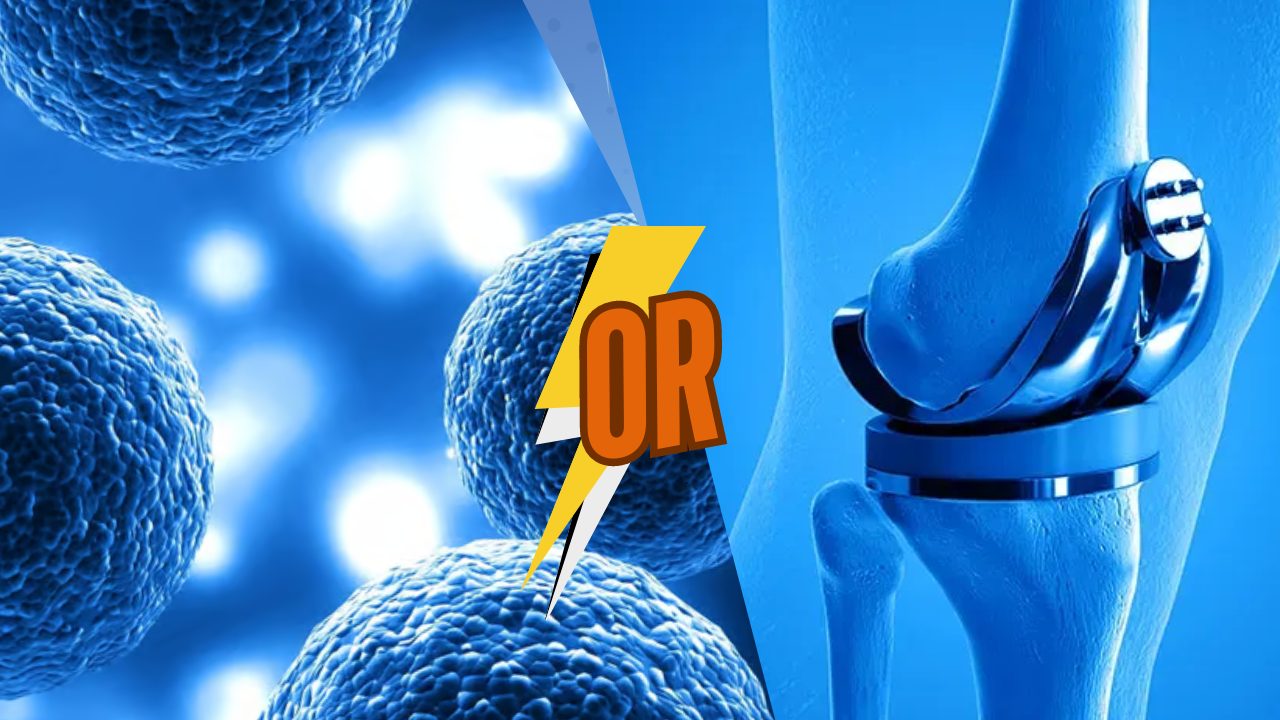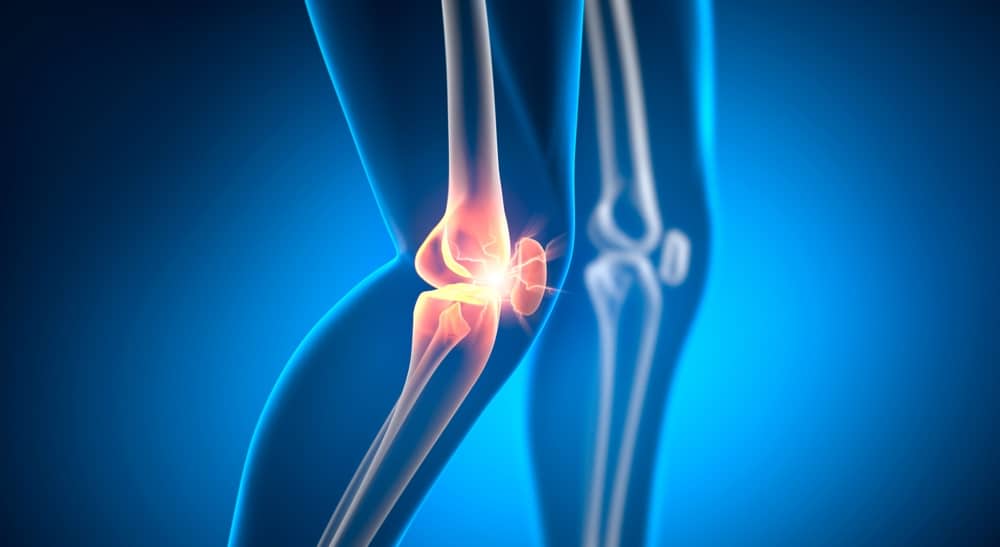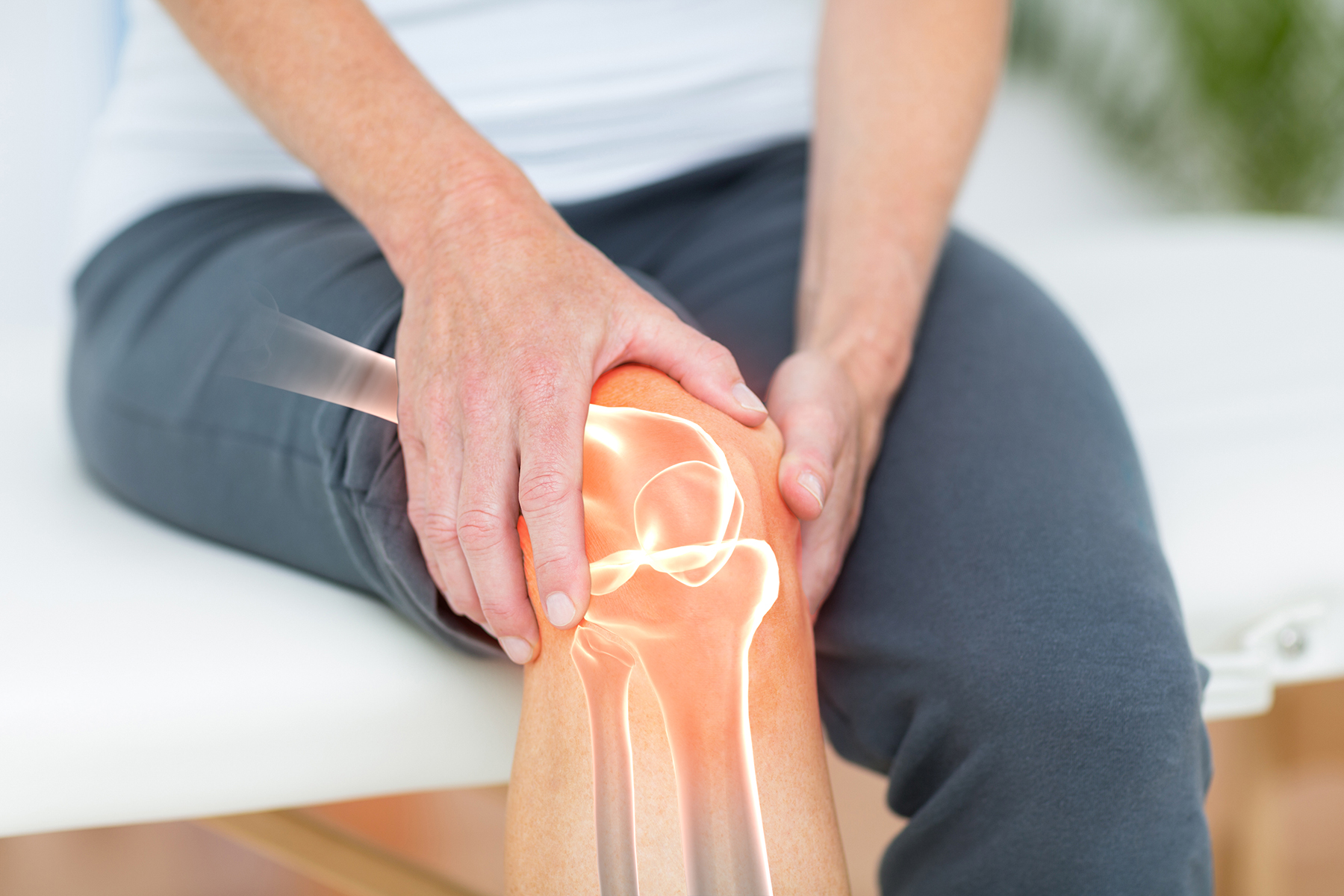- Inicio
- Reservar cita
- Sobre nosotros
- Tratamientos
- Enfermedad de Alzheimer
- Antienvejecimiento
- Autismo
- Trastornos autoinmunes
- Dolor de espalda
- EPOC
- Enfermedad de Crohn y colitis ulcerosa
- Disfunción eréctil y alargamiento del pene
- Fibromialgia
- Dolor de cadera
- Lupus
- Enfermedad de Lyme
- Esclerosis múltiple
- Distrofia muscular
- Enfermedad de Parkinson
- Neuropatía periférica y diabética
- Tratamientos post-cáncer
- Recuperación tras el ictus
- Psoriasis
- Artritis reumatoide
- Dolor de hombro
- Únete al club
- Estética
- Blog
- Contacta con nosotros
Around 16% of the world population is grappling with chronic knee pain due to degenerative conditions, overuse, or injury. For decades, knee replacement surgery was the only recourse to restore joint function and improve mobility. However, as time passes, new treatment solutions emerge with the advancements in medical research. As a result of this paradigm shift, innovative alternatives like stem cell therapy came to light. Regenerative treatment with stem cells addresses knee pain effectively, and patients can avoid complex surgical procedures.
Although numerous studies and clinical trials have demonstrated that stem cells can promote cartilage regeneration in affected joints, most patients are skeptical about the efficacy of the process. At the same time, deciding on knee replacement surgery is challenging, considering its invasive nature, high cost, and lengthy rehabilitation. So, how do you decide which treatment is best for you?
This blog post will guide you on both treatment procedures so that you can make an optimal and informed decision.
Table of Contents
- Overview of Knee Replacement Surgery
- Pros and Cons of Knee Replacement Surgery
- Overview of Stem Cell Therapy For Knee Pain
- Pros and Cons of Stem Cell Therapy For Knee Pain
- Stem Cell Therapy Vs. Knee Replacement – Which one to choose?
- Future of Stem Cell Therapy for Chronic Knee Pain
Overview of Knee Replacement Surgery
Knee replacement is an invasive surgery that replaces the damaged part of your knee or the entire knee joint with artificial implants. This method has been used for years to treat severe knee arthritis caused by cartilage wear and tear.
The orthopedic surgeon makes an incision on the knee under general or spinal anesthesia to remove the damaged cartilage and bones. The artificial joint, called a prosthesis, is then precisely placed in the same area, restoring knee joint alignment and function. The prosthesis consists of metal, plastic, or both and is secured in place with a press-fit or a specialized material. The incision is then covered.
Pros and Cons of Knee Replacement Surgery
Knee replacement surgery, being an old-age or conventional treatment, has become a standard medical procedure to address severe knee pain and inflammation. However, like every other treatment, this also has some drawbacks. Let’s go through the advantages and disadvantages one by one.
Pros of knee replacement surgery
- Surgery’s effects can last more than 15 years with proper care and restrictions.
- It has a high success rate as it can significantly eliminate or decrease knee pain, providing lasting relief to patients.
- Knee replacement restores joint mobility, and many patients can engage in physical activities that they couldn’t do for years.
- Patients can regain personal independence and move freely with pain relief and restored mobility.
Cons of knee replacement surgery
- The surgery is time-consuming, and the patient must stay in the hospital for 4-5 days following surgery.
- It has a lengthy recovery period, from six weeks to three months.
- Supportive treatments like physiotherapy are needed to restore strength and mobility.
- Complete movement restrictions up to 4-6 weeks of surgery, after which one can return to normalcy.
- There can be wear and tear, dislocation, or loosening of the prosthesis after a specific time.
- The surgery poses the risks of infection, blood clots, nerve or blood vessel damage, and anesthesia complications.
Overview of Stem Cell Therapy For Knee Pain
Stem cells are immature and undifferentiated cells in the human body that can develop and multiply into various cell types. Although stem cells are a new treatment, doctors are utilizing their remarkable regenerative capabilities to treat chronic knee pain.
Stem cell therapy for knee pain is a minimally invasive and outpatient procedure and typically does not require general anesthesia. The process involves injecting concentrated stem cell solutions into the patient’s knee to repair damaged tissues and promote cartilage regeneration.
Related Read: Can Stem Cell Therapy Provide Relief From Chronic Knee Pain?
Pros and Cons of Stem Cell Therapy For Knee Pain
One of the primary reasons stem cell therapy is gaining massive popularity as a treatment option for chronic knee pain is because it is less invasive with a minimal recovery period. However, it has certain limitations that compel patients to choose surgery over therapy.
Pros of stem cell therapy for knee pain
- Simple and quick procedure with minimum pain and discomfort
- Patients can return home the same day and resume daily activities within 2-3 days.
- It effectively treats multiple knee joints because stem cells address the root cause of cartilage damage. Healthy stem cells reach all the damaged tissue in the joint and promote natural healing.
- The process of tissue repair and regeneration starts after a couple of weeks.
- The newly introduced stem cells continue producing new cells for over a year, improving symptoms.
Cons of stem cell therapy for knee pain
- The effects of stem cell therapy may last two to three years, after which one might need another round of injections.
- Cell-based therapies are effective for treating early-stage knee osteoarthritis.
- Although it is a promising treatment option, it is still relatively new in medical science, and further research is needed to establish its full potential, benefits, and risks.
Stem Cell Therapy Vs. Knee Replacement – Which one to choose?
Here comes the most critical question of our exploration! Though both can effectively address knee pain and restore joint function, the best course of treatment depends on your physical condition and personal preferences. The best thing to do is to allow your physician to take the final call. Your doctor knows your current health condition and medical history and can better understand which procedure suits you.
Both treatments have a high success rate, but you must understand that the rate varies depending on the severity of the knee pain and the patient’s health. Preclinical studies showed that stem cell therapy is effective in treating mild to moderate knee osteoarthritis, with success rates around 70-80%. This regenerative medicine requires more long-term clinical trials and follow-up data to determine its efficacy in addressing severe knee pain.
Knee replacement, on the other hand, is an age-old treatment with a proven track record of high success rates of nearly 90%. However, there are many complications and risks associated with the surgery, making it a less preferred choice for patients. Also, surgery technique, implant type, and patient’s overall health are directly related to its success.
After weighing out the pros and cons of both procedures, it would be justifiable to conclude that stem cell therapy is more suitable for those whose health conditions do not allow for surgery. It is also the best option if you are looking for a natural and sustainable treatment to address pain. Ultimately, the decision will always be personal, based on your situation and the doctor’s opinion.
Future of Stem Cell Therapy for Chronic Knee Pain
The rapid progress in stem cell research has led the medical community to consider whether cell-based regenerative treatments will completely replace surgeries. Although it’s too soon to draw any conclusion, the future of stem cell therapy looks promising.
En condiciones autoinmunes inflamatorias, como Artritis Reumatoide, inyectar células madre es la mejor opción porque trata múltiples articulaciones. Sin embargo, la cirugía es más adecuada para daños graves en la rodilla debido a lesiones o desgaste excesivo.
Una cosa es segura: el tratamiento con células madre como alternativa al reemplazo convencional de rodilla ofrece a los pacientes la oportunidad de tomar una decisión bien informada, la cual sea más adecuada para obtener un alivio duradero y satisfacer sus necesidades de salud individuales.
Leer también: Poder de Sanación de la Terapia con Células Madre: Una Guía Completa
Nota Final
La terapia con células madre está emergiendo como un avance revolucionario en el manejo del dolor crónico de rodilla. Según las opiniones de los defensores de la salud, este tratamiento ultramoderno es una bendición para los pacientes que desean un método indoloro y menos invasivo para aliviar el dolor. La terapia elimina las complejidades que se enfrentan durante la cirugía y en el período de recuperación posterior a la misma.
Cuando decida si optar por la terapia con células madre para aliviar el dolor de rodilla, su primer paso es hablar con un profesional de la salud. Life Altering Stem Cell Therapy Institute, una clínica de renombre para terapia con células madre en México, puede ayudarle a determinar si es el candidato adecuado. Con nuestra instalación de tratamiento de vanguardia y expertos calificados en células madre, podemos asistirlo en tomar la mejor decisión y ayudarlo a regresar a su vida activa.








